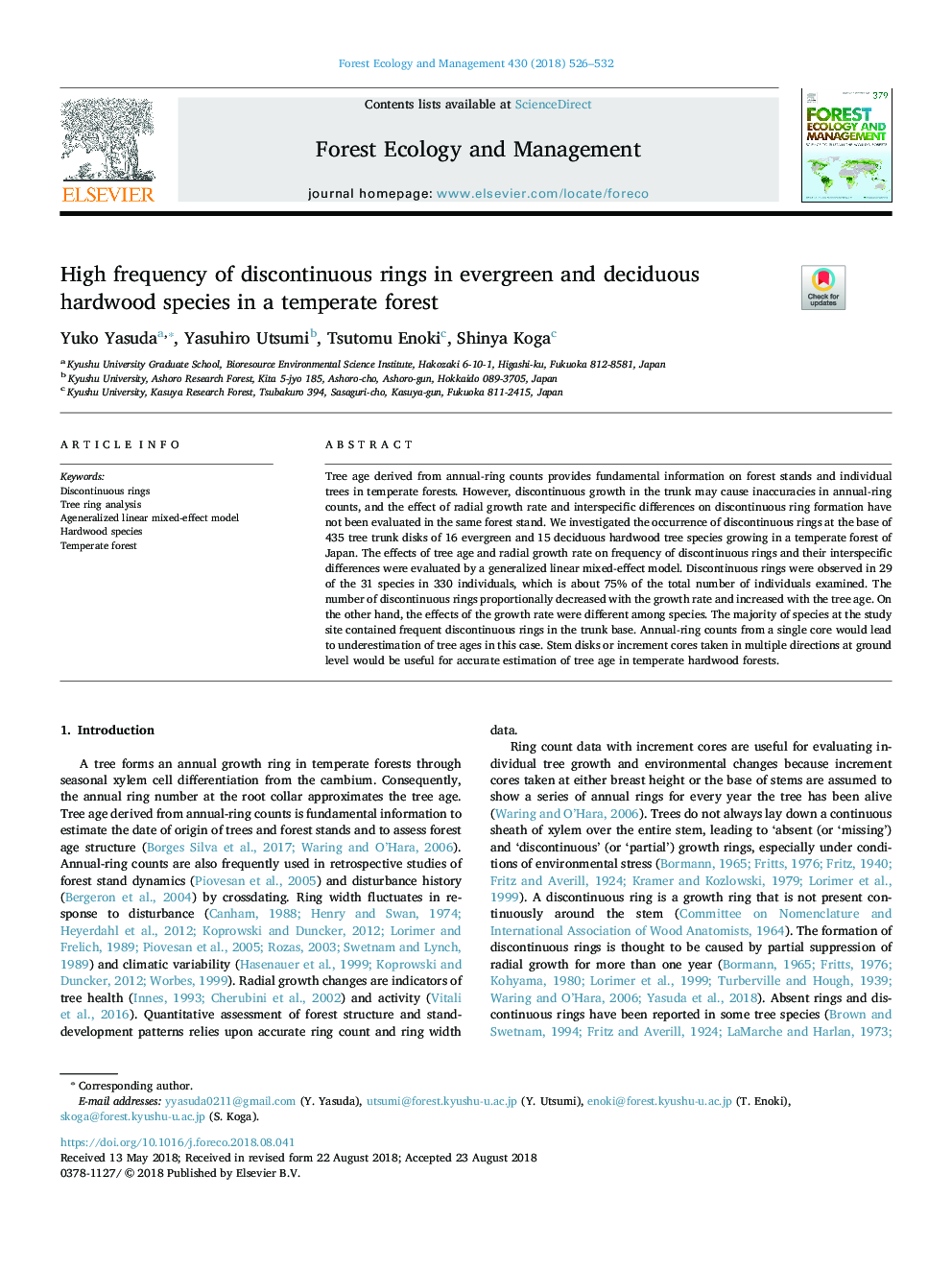| Article ID | Journal | Published Year | Pages | File Type |
|---|---|---|---|---|
| 11000047 | Forest Ecology and Management | 2018 | 7 Pages |
Abstract
Tree age derived from annual-ring counts provides fundamental information on forest stands and individual trees in temperate forests. However, discontinuous growth in the trunk may cause inaccuracies in annual-ring counts, and the effect of radial growth rate and interspecific differences on discontinuous ring formation have not been evaluated in the same forest stand. We investigated the occurrence of discontinuous rings at the base of 435 tree trunk disks of 16 evergreen and 15 deciduous hardwood tree species growing in a temperate forest of Japan. The effects of tree age and radial growth rate on frequency of discontinuous rings and their interspecific differences were evaluated by a generalized linear mixed-effect model. Discontinuous rings were observed in 29 of the 31 species in 330 individuals, which is about 75% of the total number of individuals examined. The number of discontinuous rings proportionally decreased with the growth rate and increased with the tree age. On the other hand, the effects of the growth rate were different among species. The majority of species at the study site contained frequent discontinuous rings in the trunk base. Annual-ring counts from a single core would lead to underestimation of tree ages in this case. Stem disks or increment cores taken in multiple directions at ground level would be useful for accurate estimation of tree age in temperate hardwood forests.
Related Topics
Life Sciences
Agricultural and Biological Sciences
Ecology, Evolution, Behavior and Systematics
Authors
Yuko Yasuda, Yasuhiro Utsumi, Tsutomu Enoki, Shinya Koga,
